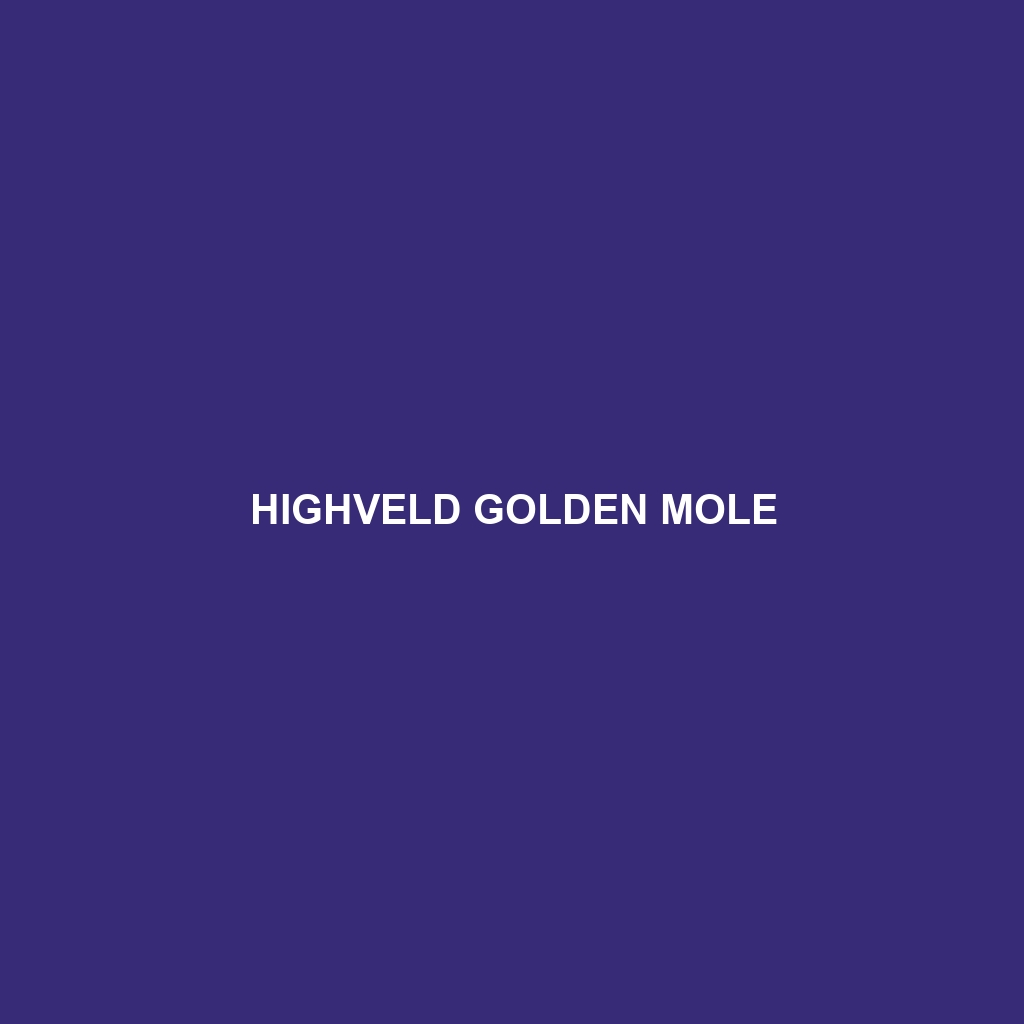Highveld Golden Mole (Amblysomus septentrionalis)
The Highveld Golden Mole is a small, burrowing mammal endemic to the Highveld region of South Africa. Belonging to the family Chrysochloridae, these unique creatures are known for their iridescent, golden-hued fur, which gives them their name. Adapted to a subterranean lifestyle, they are rarely seen above ground and have developed extraordinary traits to thrive in their underground habitats.
Physical Characteristics
Size: Highveld Golden Moles are small, typically measuring around 12 to 16 centimeters in length and weighing between 40 to 80 grams.
Coloration: Their fur is a striking golden to copper color, with a metallic sheen that can appear to change in different lighting conditions. This iridescence is a result of the microscopic structure of their fur, rather than pigmentation.
Special Features:
Eyes: They have vestigial eyes covered by skin and fur, rendering them functionally blind.
Ears: Their ears are also covered by fur, with no external pinnae, adapted to detect vibrations rather than sounds.
Claws: Their front limbs are powerful and equipped with enlarged claws, perfect for digging through soil.
Nose: A leathery, pad-like nose aids in sensing vibrations and navigating their subterranean environment.
Behaviors
Social Interactions: Highveld Golden Moles are solitary animals, coming together only for mating. They communicate through a series of vocalizations and vibrations.
Feeding Habits: These moles are insectivorous, primarily feeding on earthworms, insects, and other small invertebrates found in the soil. They use their acute sense of touch and vibration detection to locate prey.
Ecological Roles: As burrowers, they play a crucial role in soil aeration and nutrient mixing, which benefits plant growth. They also help control insect populations.
Habitats
Highveld Golden Moles are native to the grasslands and savannas of the Highveld region in South Africa. They thrive in loose, sandy soils where they can easily dig their complex tunnel systems. These tunnels not only serve as their homes but also as hunting grounds and protective shelters from predators and environmental extremes.
Adaptations
Subterranean Lifestyle: Their specialized limbs and claws enable efficient digging. Reduced eyesight and specialized sensory adaptations allow them to navigate and hunt in complete darkness.
Thermoregulation: Their fur not only offers camouflage but also provides insulation, maintaining body temperature in the varying climates of the Highveld region.
Conservation Status
The Highveld Golden Mole is currently classified as “Least Concern” by the International Union for Conservation of Nature (IUCN), suggesting that, for now, their populations are stable. However, habitat destruction due to urbanization and agriculture poses potential threats.
Fun Facts
Despite their blindness, Highveld Golden Moles have an extraordinary sense of touch, enabling them to live an effective life underground.
Their burrowing activity can sometimes lead to the aeration of soil, which is beneficial for plant roots.
The iridescence of their fur is a unique trait among mammals, making them one of nature’s rarest glittering creatures.
This detailed description encapsulates the fascinating world of the Highveld Golden Mole, highlighting their unique adaptations and integral role in their ecosystem.
